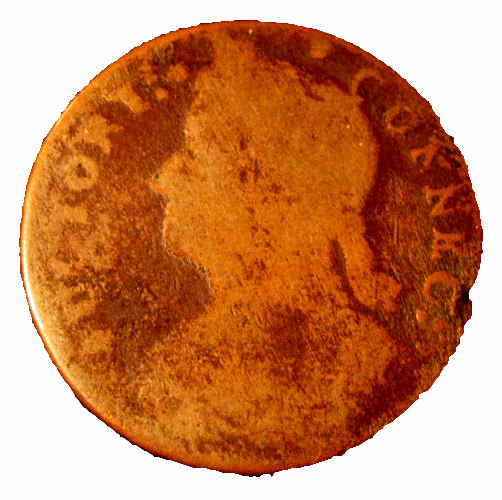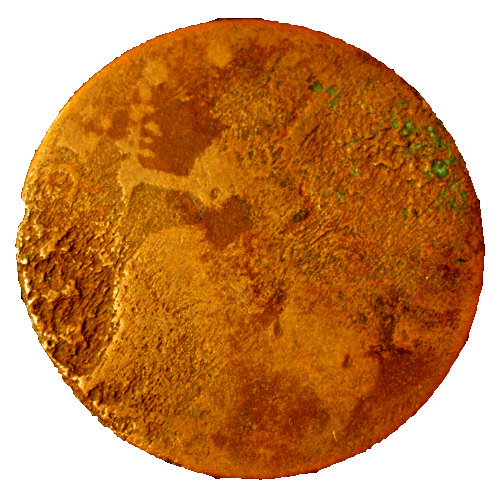



| This coin was produced for use in the colony of Connecticut. It dates from the year 1787. The Connecticut Copper was minted during the years 1785 through 1788, and is often considered to be the equivalent of a British halfpenny. The basic design was intended to imitate the British halfpenny. There were roughly 240 varieties of this 1787 coin identified by Henry Miller, and included in the book The State Coinages of New England (1920) by Henry C. Miller and Hillyer Ryder. (There apparently are over 350 die combinations of the coin spanning the four year period it was produced. The coin was produced at six different mints and employed twenty bust styles and more than 100 type varieties.) According to the examples of known coins, as presented on the website: CoinFacts.com, this example resembles most closely what is presented as #Miller 31.2-r.3, a draped bust variety, which is one of the more common varieties. The obverse of this coin features the bust of King George II, facing left. (When facing right, the bust was intended to represent King George III.) The bust is shown wearing a toga (while in other examples, he is wearing chain mail armor.) There is a legend that reads: Auctori Connect that translates as: "By authority of Connecticut". The reverse consists of a seated figure holding a spear in her left hand and an olive branch in her right. The legend on the reverse side reads Inde Etlib, being an abbreviation for the phrase: "Independence and Liberty". |
